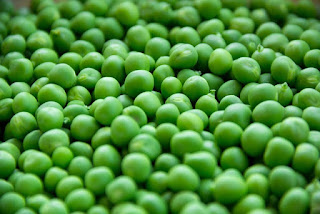Wild Geranium, scientifically known as Geranium maculatum, is a perennial plant native to North America, widely known for its attractive flowers and traditional medicinal uses.
Here are some key facts about Wild Geranium:
Botanical Characteristics:
--Wild Geranium is a member of the Geraniaceae family.
--It typically grows about 1 to 2 feet tall.
--The plant features lobed, palmate leaves that are often spotted or marked, giving rise to the name "maculatum," meaning spotted.
--It blooms in late spring to early summer, producing showy, pink to lilac flowers, each with five petals.
Habitat and Growth:
--It is commonly found in woodlands, meadows, and shaded roadside areas.
--Prefers moist, well-drained soils but is relatively adaptable to different soil conditions.
--It is native to eastern and central North America.
Gardening and Landscaping:
--Wild Geranium is popular in gardens for its attractive foliage and flowers.
--It’s used in shade gardens, woodland gardens, native plant gardens, and as a border plant.
--The plant is valued for its ability to spread and fill in areas without becoming invasive.
Medicinal Uses:
--Traditionally, Native Americans used Wild Geranium for various medicinal purposes, including as a treatment for diarrhea and mouth ailments.
--The roots contain tannins which are thought to have astringent properties.
Wildlife Value:
--The flowers attract bees, butterflies, and other pollinators, playing a role in the local ecosystem.
--It is also a food source for some caterpillars of certain butterflies and moths.
Culinary Uses:
--While not commonly used in modern cuisine, some parts of the plant were reportedly used by indigenous peoples as a food source.
Propagation:
--Wild Geranium can be propagated by seed, division, or by separating the offsets.
--It self-seeds in optimal growing conditions.
Cautions:
--While not highly toxic, it's always advisable to exercise caution and consult with a professional before using it for medicinal purposes.
--The astringent properties of the root can be strong, and it should be used carefully.
Wild Geranium is appreciated not just for its aesthetic appeal in gardens but also for its rich history in herbal medicine and its role in supporting local wildlife. As with many native plants, it offers a combination of beauty, ecological benefits, and a connection to traditional practices.
Wild Geranium, or Geranium maculatum, is a fascinating plant with a variety of interesting aspects that go beyond its attractive appearance and traditional uses.
Here are some unusual facts about this plant:
Nomenclature Confusion: The name "geranium" is a bit misleading. The plants most people refer to as "geraniums" in gardens are actually from the genus Pelargonium. True geraniums, like the Wild Geranium, are different and belong to the genus Geranium.
Seed Dispersal Mechanism: Wild Geranium has a unique method of seed dispersal. Its fruit capsule is beak-shaped, and when the seeds are ripe, the capsule curls and flings the seeds away from the parent plant. This ballistic seed dispersal is sometimes called "explosive dehiscence."
Survival Strategy: The Wild Geranium is capable of closing its flowers on cloudy or rainy days. This behavior protects the pollen and nectar from getting washed away, ensuring that the plant can still attract pollinators on sunny days.
Folklore and Symbolism: In some cultures, geraniums have been associated with various superstitions and symbolisms. They have been used in folk magic for protection and to ward off evil spirits.
Historical Medicinal Use: Beyond the commonly known medicinal uses, some Native American tribes used Wild Geranium as a mouthwash or gargle remedy, particularly for sore throats and mouth ulcers.
Variable Flower Color: While typically pink, the color of Wild Geranium flowers can vary significantly, ranging from nearly white to deep purple, depending on various factors like soil acidity and age of the flower.
Leaves Change Color: In the fall, the leaves of the Wild Geranium often change to a reddish-brown or orange, adding autumnal interest to the landscape.
Pollinator Specificity: While the plant attracts a variety of insects, it is especially favorable to long-tongued bees due to the flower's structure, which is adapted for pollination by these specific insects.
Herbal Remedies: In herbal medicine, Wild Geranium has been used for its astringent properties to treat minor wounds and stop bleeding, capitalizing on the tannins found in the roots.
Cultural Depictions: The Wild Geranium has been a subject in art and literature, often symbolizing tranquility and modesty, reflecting its unassuming appearance in wild settings.
These unusual facts highlight the ecological complexity, historical significance, and cultural symbolism associated with Wild Geranium, making it a plant of interest not just for gardeners but also for naturalists and historians.




















































